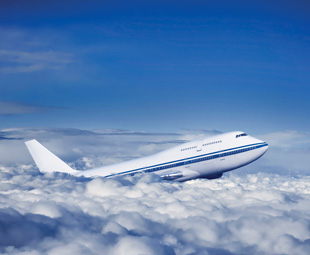Soaring safety or skyrocketing risks?

The aviation industry prides itself on being one of the safest around, but this year saw some cumbersome headlines that painted another picture … JACO DE KLERK takes a look at aviation safety and how it compares to other movement modes.
According to Tony Tyler, director general and CEO of the International Air Transport Association (IATA), around 100 000 flights take to the air and land safely each day. “The systems supporting global aviation have produced the safest mode of transportation known to humankind,” he points out.
A 2013 study in Research in Transportation Economics: Comparing the Fatality Risks in United States Transportation Across Modes and Over Time – as cited on the Journalist’s Resource (named one of the best free reference websites by the American Library Association in 2013) supports this statement.
The reference website notes that the researcher, Ian Savage of Northwestern University (a private research institute based in the United States), prefaces his findings with an important “caution” on measures of “safety” …
“The focus on fatalities is primarily motivated by a greater confidence that this measure of safety is reported more consistently and accurately across modes and time,” writes Savage. “In general, cross-sectional and time-series comparisons in fatalities are also indicative of differences in non-fatal injuries, illnesses and property damage, albeit that the correlation is not perfect. In particular, fatalities are a poor measure of some of the environmental risks associated with the transportation of oil products and hazardous materials.”
He continues: “In addition, many of the advances in safety in recent decades have focused on ‘crashworthiness’, whereby design changes have been made to increase the survivability of crashes and mitigate the severity of injuries. Consequently, it is possible that a reduction in fatalities may be partly compensated for by an increase in the number of injuries.”
With this said, Savage found that mainline railroads claim an average of 876 lives per year. Most of these fatalities occur during collisions with highway users and pedestrians. “Per year, on average, only seven passengers travelling on mainline trains die,” the reference website cites Savage.
“The overall fatality rate for long-haul train service is 0,43 per billion passenger miles. Excluding pedestrians and others not on trains – 64 percent of total fatalities assigned to railroads – the fatality rate is approximately 0,15 per billion passenger miles.”
For buses, on average, there are approximately 40 fatalities per year – with drivers and other bus-company employees representing 25 percent of lives lost. “The fatality rate per billion passenger miles for buses is a relatively low 0,11,” the study notes. “However, this is still 65 percent greater than that for aviation, and doesn’t include victims of crime.”
The Journalist’s Resource adds that the majority of aviation fatalities that occur each year (85 percent) involve private aircrafts. “On average, 549 people die each year in activities such as recreational flying
(41 percent of flight hours), business travel (24 percent), and instruction (17 percent).”
It states that Savage found that (excluding acts of suicide and terrorism), commercial aviation was the safest mode of travel in the United States, with 0,07 fatalities per billion passenger miles. “A person who took a 500-mile flight every single day for a year, would have a fatality risk of one in 85 000.” The Journalist’s Resource says that takeoffs and landings are where the risk is, not in the number of miles flown, so risk-per-flight calculations are higher.
This safety record was challenged earlier this year, however, when Malaysia Airlines Flight 17 (MH17), an international passenger flight scheduled from Amsterdam, in the Netherlands, to Kuala Lumpur, was sadly shot down on July 17, over eastern Ukraine.
“The tragic shooting-down of MH17 was an attack on the whole air transport industry,” states Tyler. “The world’s airlines are angry.” He adds that MH17 was a clearly identified commercial jet and it was shot down – in complete violation of international laws, standards and conventions – while broadcasting its identity and presence on an open and busy air corridor at an altitude that was deemed to be safe.
“Civil aircrafts are instruments of peace,” says Tyler. “They should not be the target of weapons of war.” In retaliation the IATA joined with the International Civil Aviation Organisation (ICAO), Airports Council International (ACI) and the Civil Air Navigation Services Organisation (CANSO) in a declaration committing the parties to review processes for flying over conflict zones.
This included a commitment by ICAO to establish a task force, comprising various industry experts, to address the civil aviation and national security issues that arose from MH17. Two critical tasks were awarded to the unit. “The first, and most urgent, is to ensure that governments provide airlines with better information with which to make risk assessments of the various threats they may face,” said Tyler when the task force was announced.
He adds that members of the aviation fraternity were told that flights traversing Ukraine’s territory at above 9 750 m would not be in harm’s way. “We now know how wrong that guidance was. It is essential that airlines receive clear guidance regarding threats to their passengers, crew and aircraft. Such information must be accessible in an authoritative, accurate, consistent and unequivocal way,” he reiterates.
Tyler says that the second task is equally important, but comes with a longer time frame. “We will find ways, through international law, which will force governments to institute better control of weapons that have the capability to pose a danger to civil aviation.”
IATA and the rest of the industry called for controls on the design, manufacture and deployment of anti-aircraft weapons. “Weapons of war – including powerful anti-aircraft weaponry – are also in the hands of non-state entities,” Tyler points out. “We have conventions that address chemical, nuclear and biological weapons, plastic explosives as well as the trade in weapons generally, but there is no international law or convention to manage them – as exists for many other forms of weaponry.”
He adds that MH17 showed us that there is a gap in the international system that must be closed. “Under ICAO’s leadership, I am confident that we can find ways within the United Nations’ system, to augment the international law framework to ensure that countries fully understand and discharge their responsibilities in this regard.”
The aviation industry, like other modes of transport, isn’t without its tragic blights, but it is taking a firm stand against them. “There is no need for major surgery, but we must identify and close some specific gaps in the system that, however infrequently, lead to unspeakable mistakes and tragedies,” Tyler concludes.
Published by
Focus on Transport
focusmagsa




